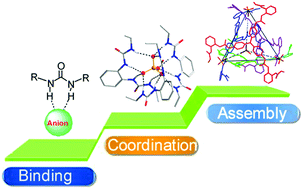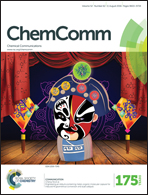Anion recognition by oligo-(thio)urea-based receptors
Abstract
Oligo-(thio)ureas have proven to be a promising class of receptors that are widely applied in anion recognition. This article aims to present some recent progress in the construction of oligoureas and their anion coordination (recognition) chemistry. Typical examples of metal-coordination assisted and covalently connected oligo-(thio)urea receptors are summarized, with focus on geometry characteristics required for achieving complementary binding of a target anion. Special emphasis is given to ortho-phenylene-connected oligoureas in the application of anion binding and the self-assembly of important supramolecular architectures, including helicates, tetrahedral cages, and so on.

- This article is part of the themed collection: Host–guest chemistry

 Please wait while we load your content...
Please wait while we load your content...